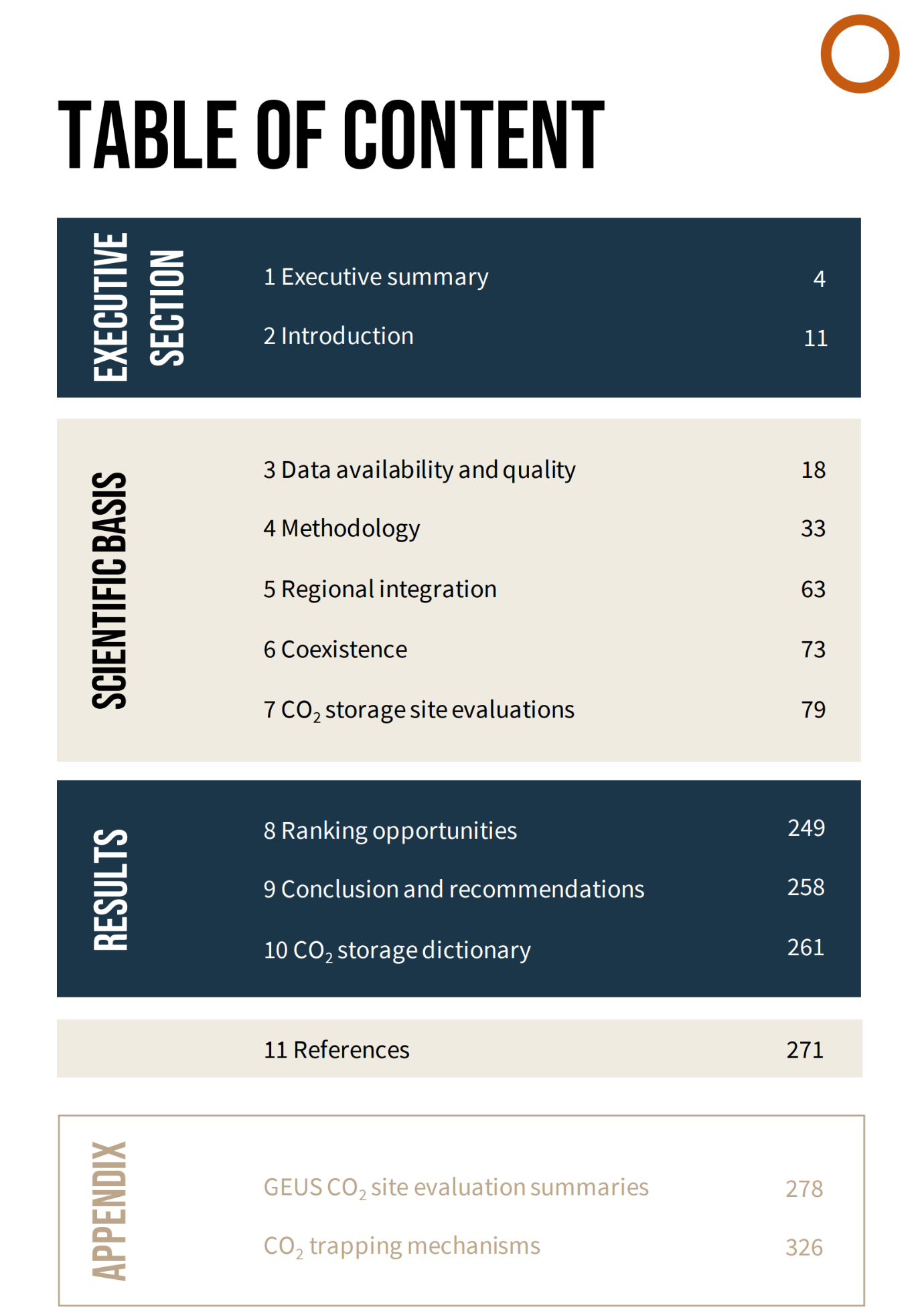The independent assessment of the estimated CO₂ storage capacity onshore and nearshore in Denmark is a resource of great value for companies and organisations who are interested in Danish CO₂ storage potential:
Detailed, in-depth evaluation of Danish nearshore and onshore CO₂ dynamic storage capacity with thorough analysis and validation of the scientific basis.
Better awareness of confidence and risks for each of the potential onshore and nearshore Danish CO₂ sites.
All the information you need to apply for acreage or run a due diligence on a possible future investment.
Please don’t hesitate to contact us if you are interested to learn more.
For the policy makers
The independent assessment offers a ranking of all evaluated sites and their ranges of potential storage capacities with a Low case, a Base case and a High Case.
The study offers a recommendation for how to prioritise specific sites above others that potentially share the same aquifer, in order to maximise CO₂ storage capacity for Denmark while ensuring the lowest cost possible.
The report offers insight into subsurface aspects that have significant impact on future planning of infrastructure. Out of 18 potential sites evaluated, five have reservoirs that are considered to be unsuitable for CO₂ injection.
For the investors
Which site should you prioritise in the upcoming CO₂ storage licence round? Where is the site that has the highest storage capacity and the lowest risk?Perhaps your company has an appetite for higher risk?
This study offers insights enabling strategic decision making.
The CO₂ storage capacity estimates per site provided in the report correspond to the Lead and Prospect level of maturation in the SPE SRMS CO₂ storage classification framework with 1U, 2U and 3U ranges of Undiscovered prospective resources. The current GEUS report No. 46 from 2020 evaluations are at Play level.
Note that the Stenlille site has not been included in the evaluation. The reason is that the operator of the current Gas Storage has access to more data.
For the geologists
The study provides convenient overviews of all data used in the independent assessment, and thorough description of which data one can trust.
CO₂ storage capacity ranges simulated using the ExploCrowd proprietary proxy model in the dynamic domain for each of the 18 sites evaluated. The CO₂ storage efficiencies range from 0.2% and up to 20% for one site with a potentially excellent aquifer.
The report includes recommendation for how each potential CO₂ storage site can be de-risked through an appraisal program.
The report offers insights for both non-geologists and subsurface experts
An evaluation summary for each site is available in Chapter 7 in the Scientific Basis part of the report.
An extensive overview of input parameters are useful for easy overview of the input parameters for both the static and dynamic domain calculations.








